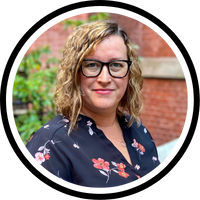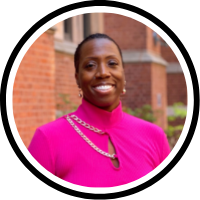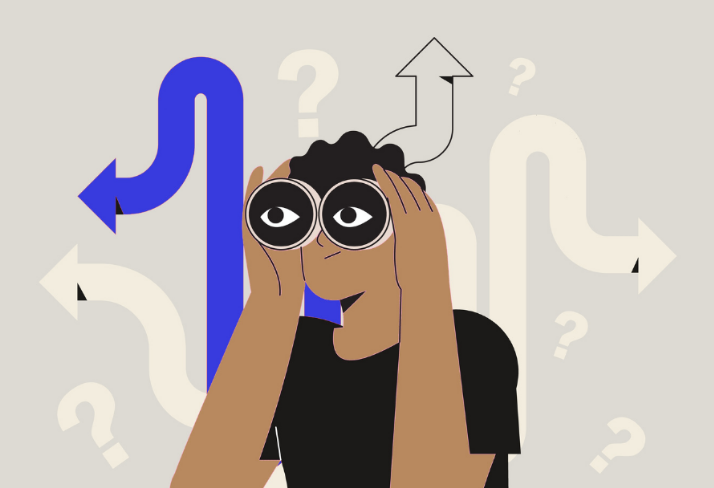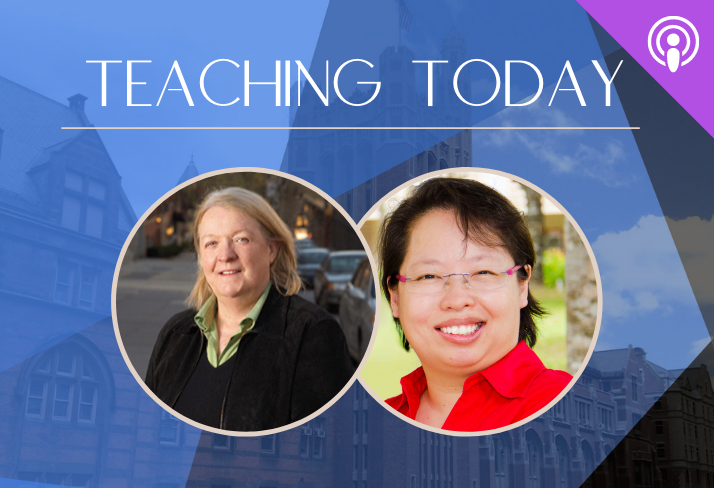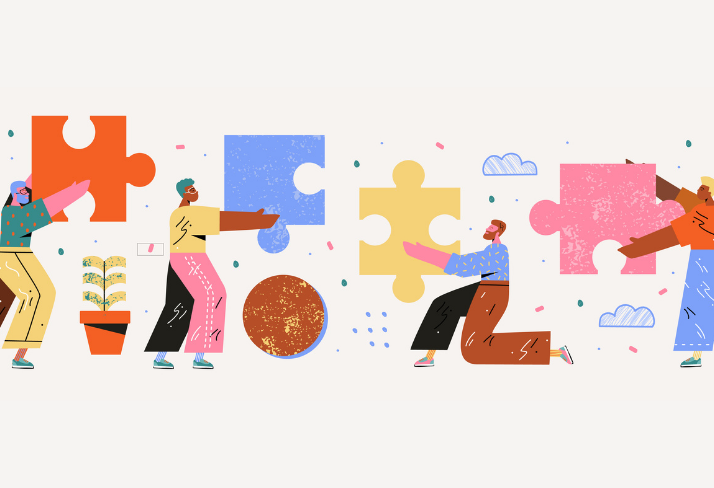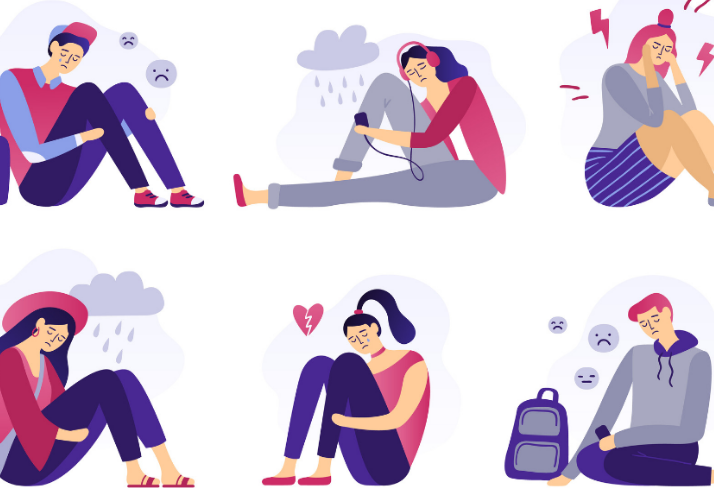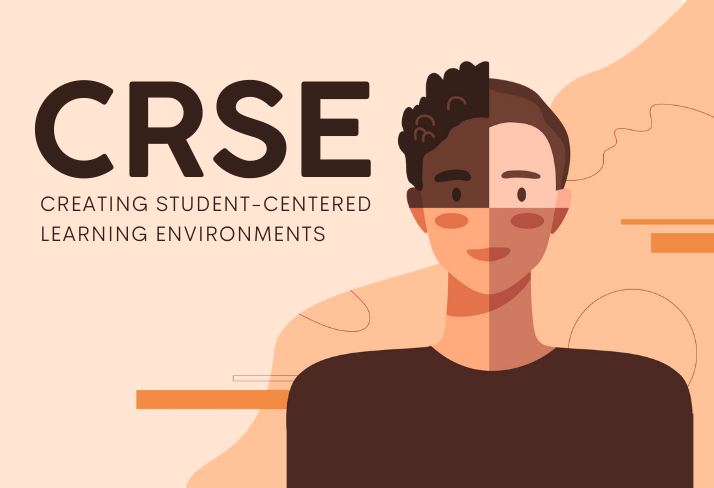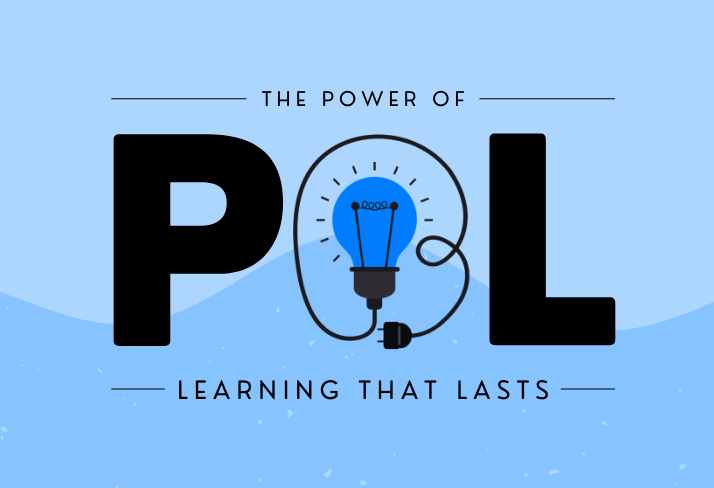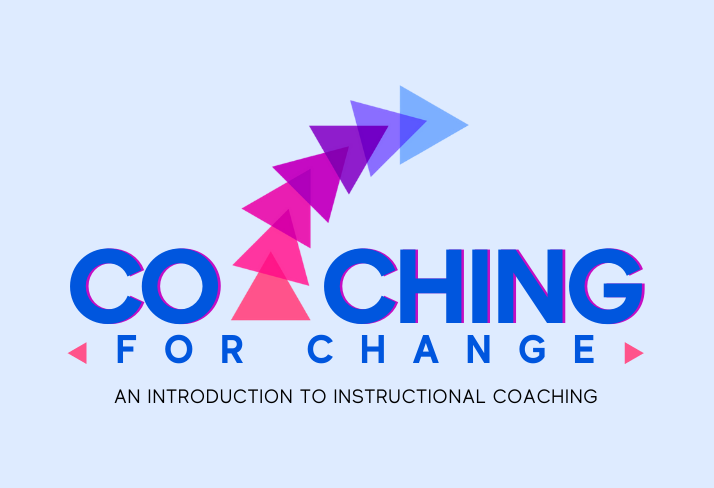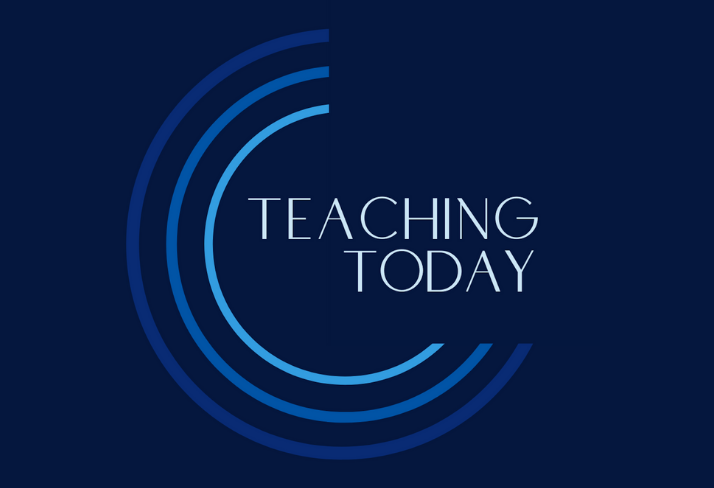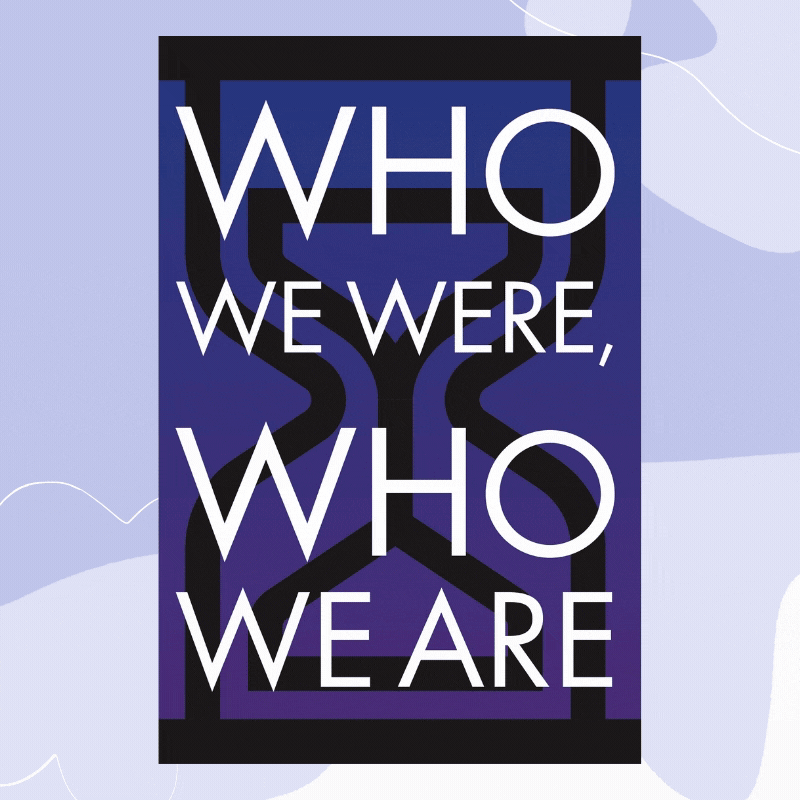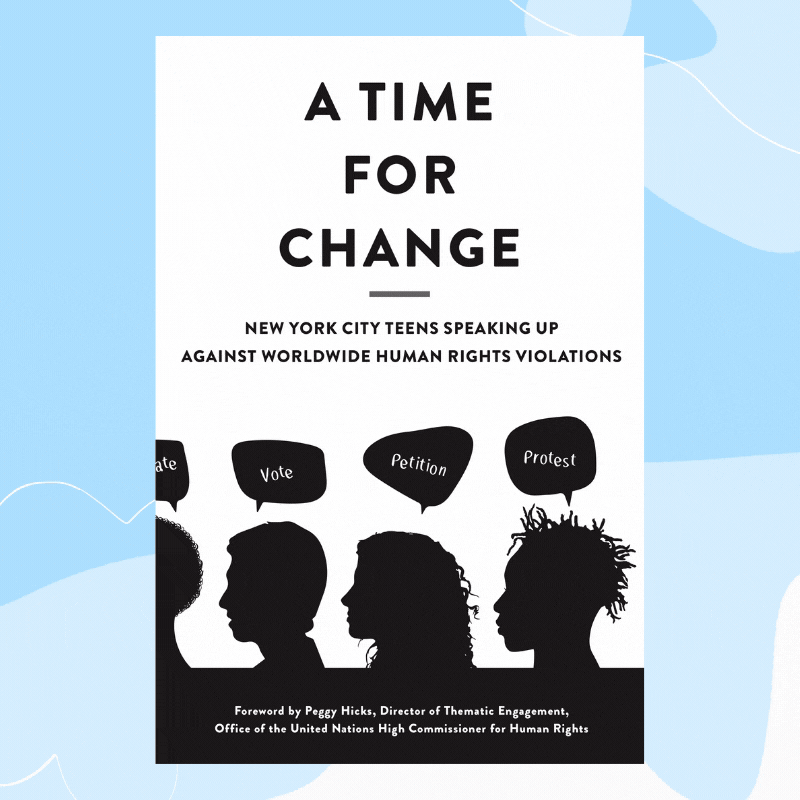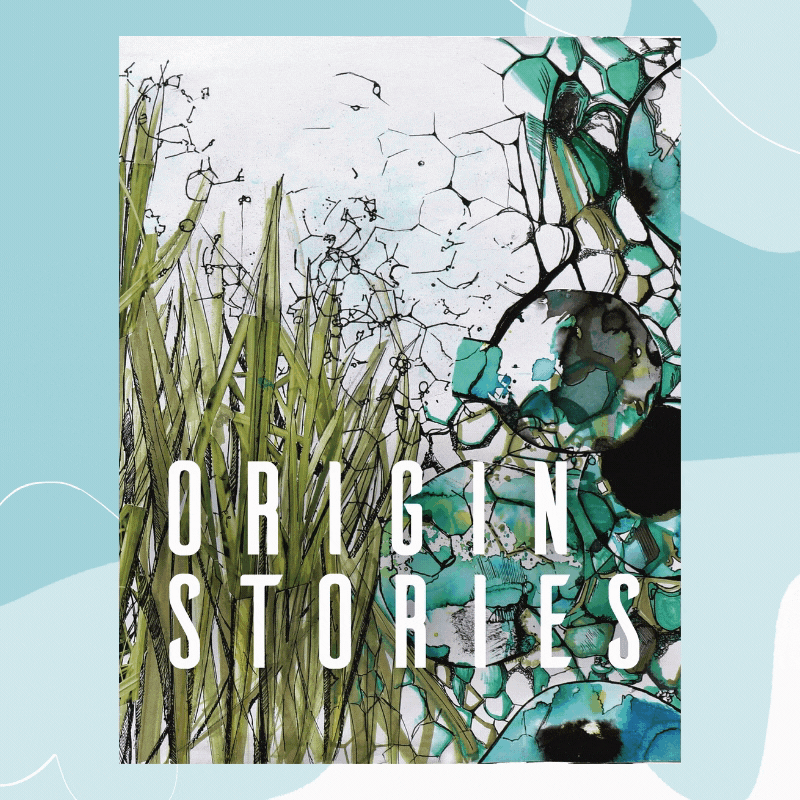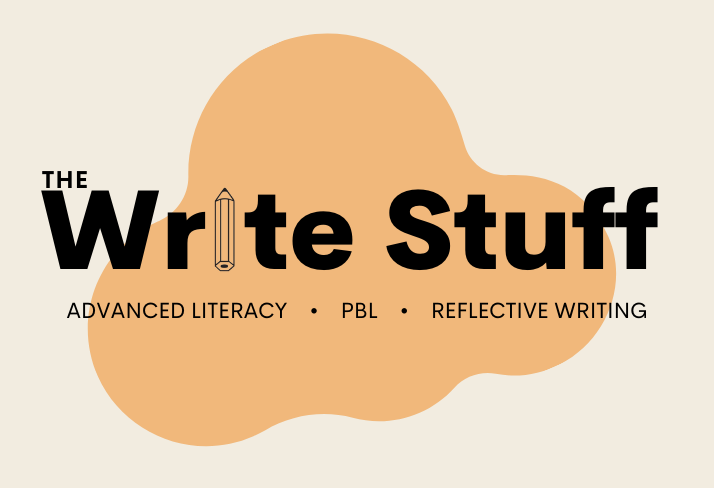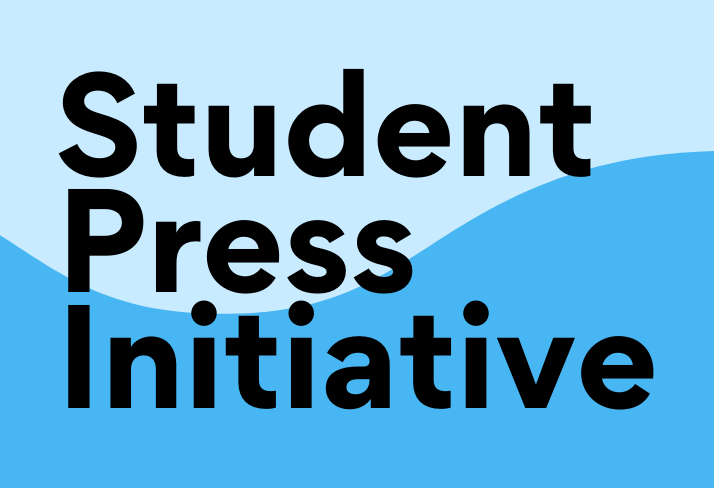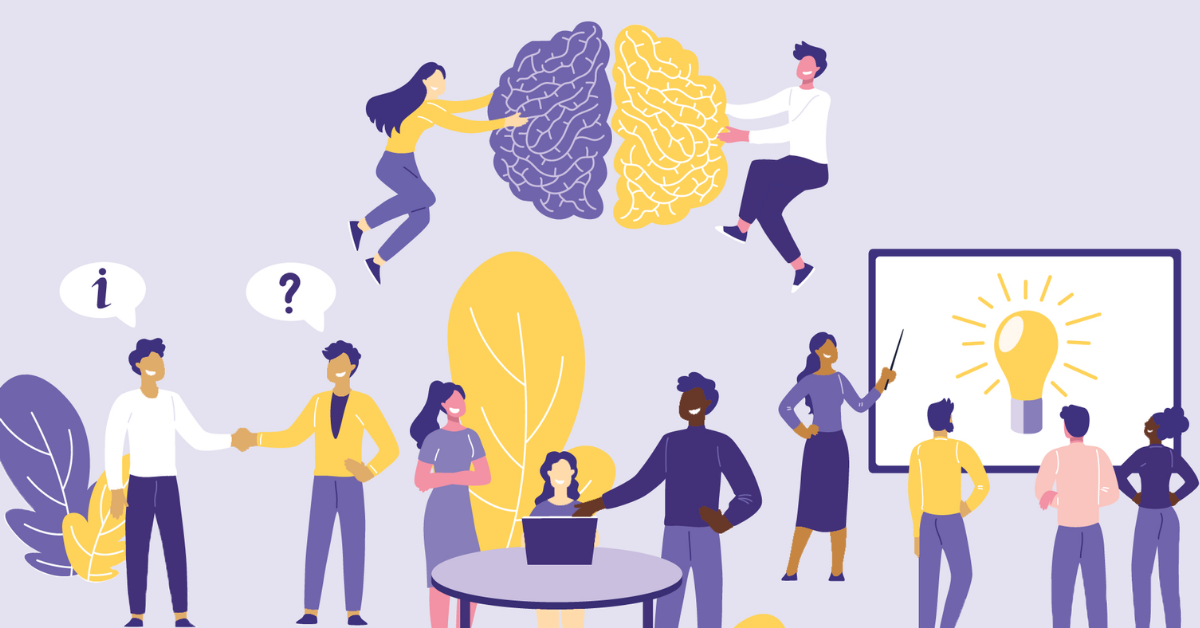|
Prompt new perspectives for the year ahead using one simple sentence.
Any way you look at it, the last two years have been very different from anything most of us have experienced, upending the way we teach, the way we live, and the ways in which students learn. These years have revealed vulnerabilities, punctuated inequities, and surfaced extraordinary human resourcefulness and potential. Many of the decisions made within this time will have long-term consequences for the future of education, and we are likely years away from understanding the full social-emotional impact for teachers and students.
Before going any further, we have to give a huge shoutout to all the teachers, school leaders, parents, extended family members, and friends who continue to contribute time, patience, perseverance, and ingenuity as they help children learn. We have been navigating uncharted territory for an extended period of time, and in the face of numerous challenges, you have continued, time and again, to step up in support of students.
Prompting new perspectives
As we come to the close of another school year, we’re at a natural checkpoint for reflection where we can consider the year’s successes and missteps, and think deeply about how our experiences this year can inform our actions in the next. Whether or not you have been practicing regular reflection this year, it’s never too late to start! One of our favorite ways to check in after a meaningful experience is to use the prompt: I used to think, but now. This exercise provides an opportunity to reflect back on where you started — whether that’s at the beginning of the school year, the semester, or any marker of time that’s relevant to you — and evaluate how your thinking has changed since that time. Your responses might look something like this:
Because critical reflection is, well, critical, you can also use this sentence starter to reflect on work/life balance as you think through ways to find space for self-care, create time for outside interests, or unpack personal challenges. I used to think, but now is powerful because it challenges us to identify a point in our lives where we’ve changed our minds or had new learning, but haven’t yet explored or processed this transformation. By spending even just a few minutes responding to this prompt, we can make our realizations concrete and explicit — and that will help us to internalize these life lessons for the future. This is also a great strategy to share with other adults on teacher teams, or with students. Even young learners can follow along to reflect on what they’re learning and how their perceptions are changing throughout the year. Take this practice one step further by asking yourself how your shifted understandings or beliefs will impact your practice in the coming year. What will you do differently in the future? (We call this one, “I used to think, but now…and so…?”)
Reflection is an ongoing process — we continue to learn lessons each year because we are different, our students are different, and the world around us is different. Finding moments to reflect on all we’ve learned and reset our expectations for the future is crucial in order to meet ourselves and our students in the current moment.
Tell us in the comments: how would you respond to I used to think, but now? 6/7/2022 Lessons from the Field: Practice and Professional Learning with the Global Mindset Framework
Making a 21st century skills framework meaningful for K-12 instruction.
Over the past century, advanced technology has made the world smaller and smaller. This has perhaps never been truer than the past decade, in which social media has made it possible for a tweet or an Instagram post to be seen around the world in mere seconds. Consequently, we see and have many more collective experiences. This was perhaps never more evident than over the past few years with the shared experience of a global pandemic and a rapid impact on learning in most parts of the world.
As we were thrust into new ways of thinking about teaching and learning, different mindsets, and different ways of imagining schools, we were faced with the truth that we can no longer sustain a 20th century in a 21st century world. The task before us is to educate students today for the world they’re poised to lead tomorrow. As a founding organization of the Global Learning Alliance (GLA), we have been thinking about reimagining education and preparing educators for the future for quite some time. The GLA is the outgrowth of our groundbreaking research in five of the top PISA-ranked cities around the world on the features and practices surrounding 21st century teaching and learning, and is committed to cross-cultural research collaborations as an effort to define a pedagogy that takes into account the dynamic needs of our changing world. Through this work, we are dedicated to understanding, defining, applying, and sharing the principles and practices of a world-class education within a wide range of educational contexts.
Essential mindsets
As part of research and collaborations with K-12 schools and university partners around the world, we have developed the Global Mindset Framework, which identifies five mindsets that have emerged as most relevant to the future success of today’s students. Each mindset includes four key skills that demonstrate the actions that can be seen when cultivating the mindset. But just having access to a framework doesn’t mean it’s automatically linked to classroom practices — and some of these mindsets haven’t been typically taught in schools. As a result, we always consider how we can help educators to analyze, apply, and adjust learning frameworks as they incorporate them into their everyday teaching practices.
Putting the framework into practice
The challenge with any educational framework is translating it into meaningful practice for the teachers and students it's intended to serve. We were privileged to partner with the Brunswick School to integrate 21st century practices into a wide range of courses across all grade levels. We customized our professional learning approach to maximize the time we had together so teachers could have meaningful conversations, practical applications, and space to reflect on their experiences for deeper learning. We used a blended approach to professional development that included customized, professional learning videos and synchronous 75-minute sessions to explore the meanings of each component and practical application for classroom practices.
Metacognitive reflection
As we worked across department teams, we wanted to model the mindsets of the framework, so with each new mindset that we studied, we created a customized video with the basic facts, and then planned for an interactive face-to-face session where teachers developed practical strategies after watching the video and discussed the impact of the framework on their classes. Some teachers noticed that incorporating a new mindset each month allowed them to expand their learning outcomes beyond simply “critical thinking skills” and that they were setting critical goals for collaboration through group work and discussion, as well as creativity where they used imaginative writing prompts to help students expand their thinking. This kind of integrated thinking helped the teachers test and tweak their learning strategies immediately. By creating heterogeneous groups in these sessions, we were also able to support cross-grade professional learning conversations that generated great ideas from different vantage points. Teachers from the upper grades were amazed at the different planning and pedagogical moves made by the teachers in the lower grades. Similarly, the teachers in the lower grades benefited from learning more about student expectations in the upper grades. These realizations created space for metacognitive reflection about their practice, and challenged some of the assumptions we all have when thinking about planning for our specific grade/content area. Like working with students, we know that placing adults in strategic and flexible groupings is a powerful lever for keeping learning fresh. During the culminating session about their learning, each teacher was given an opportunity to share a lesson, unit, or project they implemented or planned to implement by applying a single or multiple mindset from the framework. Their learning was evident through their sharing and evidenced in the artifacts from their student work. In one case, a teacher hoped to have students investigate COVID-19 using actual numbers and data to unpack the pandemic. After interpreting the data, they would design charts and graphs to share their findings, make predictions for the long-term impacts of COVID-19, and offer recommendations for next steps. Throughout the project, students would implicitly be asked to demonstrate the Global mindset from our framework, as they strove to solve real-world problems.
Lessons learned
When educators consider the implications of the Global Mindset Framework within their own curriculum, we’ve seen how they cultivate their own mindsets, in addition to making direct connections to new teaching practices. Our partners demonstrated that when we scratch the surface of 21st century skills, we see that there are not only many innovative practices, but many unanswered questions. Some of our big learning moments and new questions included the following:
In education, we often encounter frameworks — whether it’s a framework for literacy, a framework for evaluation, or a framework for instruction — that should translate into practice. This translation can be achieved through thoughtful and intentional professional development that respects the knowledge of teachers and honors the ways adults learn. By structuring these professional learning sessions in both synchronous and asynchronous engagements, and using cross-content and grade-level groupings, teachers were able to interpret this essential framework in meaningful ways.
Wondering what this work could look like in your community? Reach out to us to discuss how you can bring essential 21st century skills to your students and community. 6/6/2022 Creating Transformational Change: Structures for Designing a Professional Development Series
A suggested sequence of sessions that encourages learning, application, reflection, and the sharing of promising practices.
Effective professional development can be defined as structured professional learning that results in changes in teacher practice and improvements in student learning. Features such as strong content focus, inquiry-oriented learning approaches, collaborative participation, and coherence with school curricula and policies can be the difference between good and great professional learning experiences.
Since the 1970s, there has been a growing body of literature about learning and the application of reflective practice, which is a way of allowing educators to step back from their professional experience, develop critical thinking skills, and improve future performance. When educators can learn a new idea or concept, apply this learning to their specific context/content area, reflect on the experience and share their experiences with colleagues — a cycle we call LARS — they can bring their professional learning experience to fruition.
Using the LARS model
The LARS model is a structure for developing ongoing professional development sessions that prioritize developing community knowledge, shared practices, and deepening reflection on what works, and why. In the planning process, facilitators should conduct a needs assessment to determine the strengths and struggles across the community and strategize an area of focus. For example, one school recently discovered student performance in reading was struggling. After conducting a series of Learning Walks, the school leadership team noticed that literacy instruction was inconsistent across classrooms. The leadership debriefed their experiences and came to the conclusion that if teachers were using similar instructional strategies for Before, During and After reading, students would have increased their comprehension and confidence. The leadership team reviewed several research-based strategies and identified two strategies for each stage of the reading process, for a total of six literacy strategies to share with the whole school. They began to use the LARS framework to structure a 12-week PD series. They knew that they needed two weeks per topic: one session to introduce the strategy and make a plan to implement it, and a second session to reflect on their implementation and make adjustments.
Learning
The first session in the LARS model is focused on learning a new strategy, and making a plan to integrate or apply that strategy into instruction. This workshop should communicate the essential components of the topic, provide active engagement and an exchange of ideas between participants. In leading the first workshop on literacy strategies using the example above, the facilitators would share more about why literacy is important across content areas, as well as the concept of Before, During and After reading strategies. They’d then provide a hands-on experience with the first literacy strategy. They may choose to model the strategy using a professional text, show a video of a teacher using the strategy in a real classroom, or create a challenge for teachers to collaborate on developing a model after learning about the strategy from a shared text.
Application
At the end of the workshop, teachers consider how they can implement what they’ve learned into their practice. This is the apply portion of the session. Participants can complete an application plan where they write ideas about how they can implement the strategy, and what artifacts they will be able to bring to the next session. When teachers choose for themselves what to implement and what they want to bring back to the group, they have increased ownership in the process. By asking all participants to bring an artifact to represent what they implemented, we are able to create reciprocal accountability within the community. Additionally, when teachers across the school begin using a shared strategy at the same time, it exponentially increases the students’ understanding of how to use that strategy, and kickstarts the impact of that strategy on their learning experiences.
Reflection and sharing
The second session has a focus of reflection and community sharing. In Session 2, participants regroup through written reflection using either open-ended journaling practices, or by responding to a variety of prompts specific to the focus strategy. By reflecting on their experiences of implementing the strategy, teachers are able to synthesize the impact of that strategy on student learning and their own teaching practices. Their reflections become concrete texts and when shared, culminate as an archive of the professional learning that has occurred. After reflection, participants share their artifacts and experiences together in small groups, identifying similarities and differences in the samples of student work and their implementation experiences. Participants may celebrate successes, as well as take the opportunity to identify challenges and ways that their process can be extended. After the first two sessions, the school may choose to retry the focus strategy, or to move onto the next topic, with the expectation that teachers will be adding to their instructional tool kit with each new move they learn.
Using the LARS cycle supports the most challenging aspect of professional learning: application.
Without application, learning just floats in the air as a neat idea. Engaging in the LARS process as a school community and/or department builds in time to apply new skills and reflect on them with colleagues. The reflection aspect promotes individual thinking about what went well, and how individual teachers might tweak it to make more sense for their classroom. This can become a rigorous process where teachers in the community test and vet instructional strategies that are most effective for their unique students. The LARS model is a cycle of inquiry that lends itself to not just learning a new concept, but creates a structure that helps communities cultivate ways of working, learning and growing together to meeting the evolving needs of students.
Principal Candace Hugee weighs in on the power of quantitative and qualitative data.
In my experiences as a classroom teacher, district level administrator, and as a professional development coach, I constantly struggle with the negative connotation often assigned to data. This is especially true in cases where educators see the term "data-driven instruction" as being synonymous with high-stakes testing. As my colleague G. Faith Little notes in Understanding Data: How Does It All Add Up?, data is not just a tool for evaluation — it’s a source of information.
The meaning of data
There are several major components of data-driven instruction. Understanding not only what they are, but what they mean is important when considering data points and the intended outcome of improving instruction.
A principal's perspective
with Candace Hugee In Data-Driven Instruction, authors Ben Fenton and Mark Murphy note that “in this era of increased accountability, nearly every principal has begun using data to help drive instructional practices. Principals in the most rapidly improving schools almost always cite data-driven instruction as one of the most important practices contributing to their success. But what exactly does data-driven instruction mean to them, and how do they achieve it?” I decided to take that question and others to Candage Hugee, Principal at the Urban Assembly School for Collaborative Healthcare. We have been working together for nearly three years, and I have found her experiences and application of data for her school to be most instructive.
Current studies indicate that educators in schools with data-focused programs think using data improves their instruction significantly. Very often, these schools have a tendency to gather various forms of data, because they recognize that all forms of data are valuable information. The more information we have, the more informed our decisions can be, and the better our instruction will be for our students.
Observe, infer, and take action on a problem of practice using three simple prompts.
What are we noticing? So, what does it mean for teaching and learning? Now what should happen next? These are some of the questions posed by one of our favorite resources — What, So What, Now What — which leans on our core values of critical reflection and cycles of inquiry.
Developed by Gene Thompson-Grove in 2004 and revised 2012, this protocol allows you to do several things at once: gather information, analyze and interpret a problem of practice, and envision next steps for your work. This is a versatile protocol that can be modified to support teachers, leaders, and even students as they work to understand curricular content.
Jumpstart your reflection
What, So What, Now What can help you to evaluate a recent experience, untangle a problem of practice, or inspect quantitative or qualitative data. After observing and analyzing what you already know, you can then work toward identifying the next steps for your practice.
This resource works in three phases: Understanding the event (What?)
Making sense of the facts and implications (So what?)
Identifying a course of action or new solutions (Now what?)
Engage students in inquiry
From here, the class can begin to share highlights from their charts, and begin to draw conclusions about the lesson.
What, So What, Now What is a highly adaptable tool that can promote curiosity, reflection, and accountability. Its flexibility allows for application with all members within a school community, and we encourage you to adapt it to best meet your needs.
How are you using this resource? Let us know in the comments!
Simple strategies for imagining an equitable education that benefits all students.
Equity in schools, or a lack thereof, was a problem long before the pandemic began. However, the challenges caused by school closures and remote learning exacerbated the lack of support for minority, special needs, and low-income students, as well as language learners. As we imagine a more holistic, equitable approach to education, we must consider a version of education that addresses students’ academic, social, and emotional needs.
Equity is crucial, especially in times of crisis.
Promising practices for promoting equity
Too often, the terms equity and equality are used interchangeably. While equality means treating every student the same, equity means making sure every student has the support they need to be successful. Simply put, equity in education requires putting systems in place to ensure that every child has an equal chance for success. As President Obama said in his inaugural address, "We are true to our creed when a little girl born into the bleakest poverty knows that she has the same chance to succeed as anybody else."
We have an opportunity and an obligation to provide equitable systems that foster success for all, not just success for some. To assist and explain the process, the University of Southern California (USC) School of Education proposes seven effective ways to promote equity in education. Let’s examine what these suggestions can look like in practice.
In addition to the strategies offered above, we can promote equity in our classrooms by recognizing that all learning is a social and emotional experience. We have all endured collective trauma over the past few years, in addition to the personal losses we’ve experienced. Many students (and teachers) are still finding their way back to their learning.
We may not yet have all the answers for how to address students’ academic and emotional needs in an equitable way, even as we return to the familiar environment of our classrooms. But we do have the opportunity to do more, better!
Simple steps to support students as they assess the validity and intentions behind informational sources.
Once upon a time, being literate was as simple as being able to read, write, and do arithmetic. As educators, we also know literacy is a social construction, and being literate implies that an individual has the ability to interpret, produce, understand, and interrogate language appropriately. However, our understanding of what it means to be literate in the 21st century has been further complicated by the myriad of “literacies” we’ve come to recognize, including:
As the definition of literacy has broadened, so have the modes for finding and sharing information. This has increased exponentially with advances in technology, and is indicative of the natural shift in our understanding of 21st century literacy. The need to use multiple literacies to unpack information is tied to the need to interpret the many formats, sources, or media through which we obtain information. For educators, the challenge becomes more about how we need to teach students to interpret and assess information — not simply how to gain access to it.
The trouble with technology
Literacy development that includes technology can both support traditional literacies, and introduce new forms in the classroom. Technology can support each literacy type listed above by helping students gather a range of sources that will support them in discussing their ideas. Between smartphones, tablets, voice commands, and even Alexa, information is readily available everywhere. This is great, right? Yes, except that we are finding more and more examples of misinformation and disinformation in our daily diet. Recent articles in the New York Times and other educational sites such as Teaching Kids News further explore this topic, and emphasize the importance of understanding what it means to be literate within the context of this information-heavy era. Even if accessible information is every educator’s dream, we should not simply be giving fish to our students but rather, teaching them to fish — bolstering their literacy skills by helping them to make sense of the information around them by means other than traditional reading and writing. By teaching them how to assess the validity and intentions behind informational sources, we can empower them to raise concerns, and to verify unfamiliar or questionable sources.
Understanding misinformation & disinformation
According to Business Insider, the term misinformation refers to information that is false or inaccurate, and is often spread widely with others, regardless of an intent to deceive. Some of us may have done this ourselves and later realized that we misunderstood what we were sharing. Remember the game of telephone? One person would talk to the person next to them, and their words would travel from person to person around the room. At the end, we would often laugh at how distorted the original message had become from between the first person and the last. That is misinformation. Misinformation can turn into disinformation when it's shared by individuals or groups who know it's wrong, yet continue to intentionally spread it to cast doubt or stir divisiveness. Often, disinformation — or what some may call “fake news” — is generated to be deliberately deceptive. As educators become clearer about the distinction, it can be better communicated to students.
Emphasize how, not what to think
To combat misinformation and disinformation, it is essential that we teach our students to become critical thinkers. Learning critical thinking skills can also enhance academic performance by developing judgement, evaluation, and problem-solving abilities. This skill also transcends into practical aspects of daily life, and ultimately into college and career readiness. We can promote these skills by letting students know that we do not have all the answers, and instead offer them opportunities to unpack and understand information on their own.
With so much information at our fingertips each day, the importance of critical thinking skills cannot be overstated — it is imperative that we teach students how to interpret facts and assess the validity of informational sources. These skills will allow them to investigate the information they’re receiving, and identify misinformation in the process, helping them to become truly literate for the modern world.
Offer your students an opportunity to solve real world problems, demonstrate critical thinking skills, and collaborate with their peers.
Problems. There’s no shortage of them these days — the pandemic has spurred countless challenges and intense despair; there are too many to list. Teaching during the pandemic has been a challenge in and of itself, as we are always looking for ways for students to be engaged with curricula and drive their learning, and that’s hard to do whether we’re teaching in person or remotely.
If you think back to your college or grad school days, you may recall the constructivist thinkers, such as Jean Piaget, who believed that students learn best when they construct their own learning. Problem- and project-based learning offers teachers an opportunity to do just that — instead of telling students the answers, you can create a learning environment in which students learn through discovery, thinking, tinkering, reflecting, and developing answers on their own. We may already be familiar with ways that we can bring this type of learning to in-person classrooms, but it can also be delivered to students who are learning in remote or blended environments.
Problem-based learning vs. project-based learning
Project-based learning is situated in real-life learning. The Buck Institute for Education defines project-based learning as a “teaching method in which students gain knowledge and skills by working for an extended period of time to investigate and respond to an authentic, engaging, and complex question, problem or challenge.” If you ever walk into a classroom and see students working on a project with an exciting buzz in the room, chances are, their teachers have designed a project-based learning task. In our own lives, we know that when working on a project, we often discover a problem we didn’t realize we had — but once it surfaces, it demands a solution. (Remember those early pandemic days when we were acclimating to teaching remotely, but also trying to solve the problem of having no dedicated teaching space at home?) In teaching, this idea rings true, too. As we are learning more about a topic, we may discover a problem alongside our students, and this is the breeding ground for an exciting new project. This is the foundation of problem-based learning. Problem-based learning also offers students real-life learning opportunities, as well as the chance “to think creatively and bring their knowledge to bear in unique ways” (2020 Schunk, p. 64). Problem-based learning can look differently depending on the content and grade level, but often includes group discussions that allow for multiple perspectives on a topic, a simulated situation that involves role playing, or group work that includes both collaborative work and time to complete tasks individually. Problem-based learning promotes autonomous learning, self-assessment skills, planning time, project work, and oral and written expression skills. According to a July 2020 article from the Hechinger Report, problem-based learning has gained tremendous momentum, because it allows students to work more freely and at their own pace — a key advantage when learning remotely. In problem-based learning, the content and skills are organized around problems, rather than as a hierarchical list of topics. It’s also inherently learner-centered because the learner actively creates their own knowledge as they attempt to solve the problem.
Putting the “Problem” into Practice
As former English teachers, we both understand the challenge of putting new professional learning into practice. For teachers who need a refresher on how to design a problem-based learning experience for their students, Problem Based Learning: Six Steps to Design, Implement and Assess breaks down the steps to move PBL into practice as follows:
To help put these problem-based steps into perspective, we can look to our recent work with partners from a high school in the South Bronx. The chemistry team there decided to use an anti-racist lens while addressing a problem that was very real to their students — fireworks. During the summer of 2020, there was a record number of firework incidents in New York City. According to an article in the New York Times, the city received over 1,700 fireworks complaints in the first half of June alone. Our partners used this problem as an opportunity for students to research fireworks from multiple lenses, and imagine how they might present their findings and recommendations to local officials. After all, shouldn’t New York Governor Andrew Cuomo hear from high school students in the Bronx about the effects fireworks have on their communities? Here’s what the framework might look like in this example:
From here, we can imagine the possibilities for this framework, considering how students might address the underlying problem from different perspectives and content areas:
Teaching and learning throughout a global pandemic has presented more than its share of challenges. Out of necessity, tremendous innovation has taken place with the use of technology, pedagogy, and curriculum. With problem-based learning, we can continue this innovation in our classrooms, offering our students opportunities to solve real world problems, demonstrate critical thinking, and collaborate with their peers. We would love to hear what problem-based learning tasks you are designing for your classrooms!
Educators at all levels can benefit from working alongside a coach for continuous professional improvement.
The term “coach” often evokes memories of professional sports — like Phil Jackson and the Chicago Bulls in the NBA, or Don Shula and the Miami Dolphins in the NFL. Both coaches are credited with winning championships and encouraging athletes such as Michael Jordan and Dan Marino to become Hall of Fame inductees. But coaching is not limited to sports — and in schools, instructional coaches act as liaisons between research and practice, helping teachers learn to improve their practices in a reflective, supportive setting. Although instructional coaches may not enjoy the same salaries or notoriety as athletic coaches, they have become a policy lever for districts to improve instructional practice.
When establishing a coaching relationship or a professional learning community within a school, there are some essential questions to address: How does coaching work in educational spaces? What is the difference between coaching adults and teaching children? What are some of the practices that coaches use to support educators? How does coaching remain flexible and effective, regardless of whether the educators you’re working with are new to the classroom, or have spent years working as teachers, counselors, and administrators? No matter the situation, there is value in educators of all levels working alongside a coach for continuous professional improvement.
Student vs. adult learners
For most instructional coaches, the biggest difference in shifting from teaching children to coaching adults is recognizing the needs of adult learners. (For more on this, check out Stephen Brookfield’s work on Understanding and Facilitating Adult Learners). As educational coaches, we want to be as cognizant of what teachers need to learn, as well as how they will learn best. Our first goal is to create a safe and supportive community with multiple opportunities for reflection. Educators often experience feelings of isolation or uncertainty as they confront new challenges, in both physical and digital classroom spaces. Our goal is to name these challenges and equip educators with a toolkit they can use while teaching. We recognize that coaching in education can look different depending on the context, needs, and desires of the educator — it may include 1:1 coaching sessions and reflective discussions, team-building with small groups, facilitation of teacher teams, or whole school or even district-wide professional development opportunities. However, one thing is true regardless of the context: adult learners often ask, what’s in it for me? before investing their time and energy. Their time is valuable, and they need the learning experience to concretely further their professional practice. Adult learners also bring more experience and expertise to the coaching relationship. Coaches should strive to honor this knowledge, while simultaneously offering engaging, effective facilitation and reflection. Approaching vs. prescribing A core component of coaching work is the relationship. Whether it’s between the coach and the teacher, the coach and school administrators, or the coach and the faculty community, we prioritize the professionalism and humanity of our partners as we strive to get to know them personally. When teachers invite us into their classrooms, into their lesson plans, and into their most challenging professional situations, we know how important it is to be trustworthy, to listen with empathy, to ask questions, and respect boundaries. We are there as thought partners who can offer an outside opinion based on research and our own personal expertise. We recognize the strengths that each of our teachers bring and create opportunities to cultivate those strengths when in professional learning settings. Similar to students, no two teachers are exactly the same, nor will their approaches to teaching be the same — but we can support them in developing a teaching strategy and style that is consistent with highly effective instructional practices as they strive to meet students’ needs. Our work is guided by five principles of practice, also known as the 5Cs:
Knowing when coaching is working
How do we know if what we're doing is working? This is one of the best and maybe most challenging questions about coaching. In the context of many standards-based state and federal reform efforts, instructional coaches are playing an increasingly important role as “professional sense makers” who develop expertise in academic content standards to help administrators and teachers translate them into classroom practices. Because it can take time for a teacher to make the changes in mindsets that enable them to adjust teaching practices, instructional changes may occur in small increments. Therefore, measuring "effectiveness" is not a one-size-fits-all task. While coaching is often unpredictable, it’s extremely important to have a plan and clear goals, developed collaboratively between school leaders, teachers, and their coaches. By monitoring our progress toward the goals, we’re able to track leading and lagging indicators that represent changing practices. Smaller shifts — such as shifts in mindsets, the language a teacher uses, or small incremental shifts in their practice — are recognizable when a coach is deeply engaged in a teacher’s practice. In addition to tracking the leading indicators, or small shifts in practice, we can also look at the lagging indicators or larger moves that demonstrate significant changes over time. We look at three elements to determine effective coaching practices. First, we look to determine if teachers implement what they’ve been learning, or what they’ve been talking about with their coach. It demonstrates effective coaching if after a workshop or coaching session, the teacher begins implementing a strategy or practice they learned from the experience, even if it isn’t implemented with textbook precision. Trying something new is evidence that the coaching was impactful. Second, we look to see if the teacher begins to initiate requests for further support. Teachers who are finding coaching valuable often take the initiative to request additional support, articulate future goals, and ask specific questions to refine their practice. Finally, we want to be able to connect the dots between the coaching guidance, teacher practice, and an increase in student achievement.
Similar to athletic coaches that help professional athletes thrive and take their skills and talents to new heights, instructional coaches allow teachers to apply their learning more deeply, frequently, and consistently than teachers working alone. Coaching supports teachers as they improve their capacity to reflect and apply their learning to their work with students, and also in their work with each other. With supportive environments and thoughtful reflection coupled with sound facilitation practices, coaching can have a significant impact on teachers' practice.
Writing for publication can create awareness, raise social consciousness, and provide students with essential life skills.
When a student writes for publication, there is a shift in the dynamic between the student and their work. Picture yourself asking a student whether or not they spent a significant amount of time on their writing, only to have them respond, “Why would I spend time on it? It’s just for you.” In contrast, consider a student, who previously considered himself anonymous, telling his teacher, “Mr. Nick, I’m famous now!” after the book he co-authored with his classmates was published. Two very different reactions to a writing experience. How do we understand these two contrasting responses from young writers?
Founded in 2002, the Student Press Initiative (SPI) was designed to develop, foster, and promote writing across the curriculum through student publication, and revolutionize education by advancing teacher leadership in reading and writing instruction. Students transition from “writing for their teacher” to writing for an audience of their choice. To date, SPI has published over 850 books representing the original writing of over 12,000 students. SPI’s core values — project-based instruction, real-world authorship, community of learners, and celebrating student voice — resonate throughout these books. The grounding of these values raise the bar for what, how, and why students write.
Project-based instruction
We believe in using publishing for a real-world audience as a means to design and shape curriculum and expectations, as well as promote student engagement. We employ a backwards-planning model, where a final product is used to form an infrastructure for classroom instruction and activities. Through inquiry of the specific requirements and expectations of each project, teachers and students can better articulate the behaviors, artifacts, and customs necessary for the successful completion of the project — and being that publishing a book is a shared experience, students work together to support and encourage one another in new and powerful ways. Publication projects help to shape the culture, rituals, and routines that take place in the classroom. At the start of a project, a large calendar often overtakes the walls of a classroom, and teachers and students work together to identify the genre, audience, and purpose of their project, as well as establish details and deadlines. This helps establish a strong sense of community and collaboration. This is project-based learning at its best!
Real-world authorship
Real-world authorship shapes our approach to teaching and learning. Whether the audience is a class of incoming freshmen or first-year teachers in training, we work to connect young writers with actual readers. In the SPI model, classrooms become publishing houses in which teachers and students collectively shape an editorial vision. By exploring questions, issues, or concerns that exist in the world, their community, or within a specific content area, teachers and students collaborate to define a meaningful genre, theme, and audience. Writers then work to understand the expectations of their audience as they craft pieces with real readers in mind. No matter the content, there is always a real-world model that can demonstrate student learning with panache and voice that will engage readers. Through participation in a publication project, students develop skills and processes similar to those of professional authors. Students are supported through pre-writing and a gathering of ideas, drafting while consistently revising and editing, and finally, publishing, where they format and polish their writing to prepare for publication. Students experience “real” expectations and deadlines for publishing their book. Through these experiences, a strong sense of excitement, energy and urgency emerges.
Community of learners
SPI challenges traditional notions of “experts” in the classroom. Inspired by the work of Lave and Wenger (1996) and what they call “communities of practice,” we aim to cultivate students’ sense of expertise as writers by engaging in processes such as thoughtful inquiry of mentor texts, peer review, and peer editing. Through such processes, teachers and students work to establish a community of writers, consisting of many experts and many resources for learning and growing as authors. We encourage teachers and students to engage with a variety of texts as they begin to define qualities and attributes of powerful writing. As students learn the skills needed to write successfully, they also become experts in the project’s central theme as they read mentor texts, break genres down into smaller components, and ultimately, craft pieces that represent their learning and culminate in a final publication. A project designed around an in-depth genre study and inquiry invites students into a shared experience, and allows teachers to craft a thoughtful curriculum that addresses specific content and skills.
Celebrating student voice
Every student has a unique voice. Rather than celebrate the work of select students, we aim to celebrate the work of all students, using publication and celebration as a way to leverage and encourage participation. We believe every project should culminate in celebration — whether teachers and students decide to host a large-scale public reading at a local bookstore, smaller readings at locations such as their own school auditorium or classroom, or virtually with classmates, families, and friends. Celebrations — no matter their size or format — are powerful and rewarding experiences, and allow students to proudly share their writing with their community.
Writing can serve as a tool for creating awareness, raising social consciousness, and providing students with essential life skills. Our core values change the perspective and perception of writing for students around the world. These values, deeply embedded in our publications, reflect best practices for teaching writing in the 21st century, and help prepare students to succeed in lifelong learning.
To learn how you can partner with the Student Press Initiative and bring your students' writing to life, please reach out to us here.
Some key teaching concepts remain true, even across the world.
Literacy is defined as “the condition or quality of being literate, especially the ability to read and write”, and in education, literacy is often perceived as something teachers “teach” their students. But how can teachers increase their own literacy? And why is it important?
Along with a team of CPET educators, we recently partnered with teacher leaders in the MinHang section of Shanghai, focusing on teacher research. With the goal of preparing teachers to write a research proposal by the week’s end, we spent five days in December exploring the key aspects of teacher research, including research questions and rationale, data collection and analysis, literature review, and drawing conclusions. During our week of preparing teachers for research, we were reminded of the various types of literacy which extend beyond traditional reading and writing to include digital, media, computer, and content literacy, to name a few. For our purposes, we focused on the “literacy” of research, and found that key concepts remained true, even in Shanghai.
Humor helps just about everything
As we explored the research process, we began by brainstorming various teacher research questions that interested our group. Since we don’t speak Mandarin, we needed a translator to communicate, and were lucky enough to have Kaya Wang alongside us, who loved to laugh and make our participants laugh! Kaya posed this research question in our brainstorm: In what ways does teacher humor impact student participation? As facilitators, we know a good question when we see one, so we highlighted this question and used it for the rest of the week as we modeled each aspect of teacher research. What a difference laughter makes in any classroom! When we asked our group of teachers to complete a model review of literature on the impact of teacher humor, their research, in and of itself, became funny. By the time they began practicing research using questions of their own, they understood the process of developing and analyzing a compelling question, and they had a bit of fun, too. As facilitators, we realized how powerful it is to sneak the concept of humor into our teaching. It made all of the participants want to participate, and allowed them to understand the concepts we were teaching within the context of humor. When others walked past our classroom and heard laughing, they took a look inside...was this the classroom for “teacher research?” Why was there so much laughter? It made us examine how crucial the model is, and how delightful classrooms can be if humor is involved.
If you don't know, you don't know
While in Shanghai, we spent one evening at a grand spa with pools, baths, reading rooms, a dining area — it was lovely. Remember, this was before Coronavirus, so we had none of the concerns we would now have about going to a spa. When it was our turn to get a massage, the masseuse was asking questions (in Mandarin) and when we gestured that we didn’t understand, she spoke louder (we shrugged) and even slower (we shrugged again). We had no translation book and no phones on us (everything was in our lockers), so there was no way to translate. In an act of desperation, she took out a worn, laminated sheet to help communicate — except the characters on it were in Mandarin, so this did not help! When we discussed our spa experience later, we laughed about the misunderstandings (did we mean to get scrubbed down with a loofah sponge?), but also discussed how often this dynamic happens in classrooms. There are so many students in our care who do not have a strong background in English, and while speaking slowly and loudly may seem like a way to bridge a language gap, it won’t be helpful if the listener does not have a solid foundation in the language. If only there had been basic images or a few key words on that laminated piece of paper, we would have been able to better understand our options and the fees associated with them. (And I’m not sure we would have chosen the painful loofah scrub.) While this is not a new concept, we revisit it often, especially when creating curriculum or trying to reach online learners. When creating content, we remind ourselves of our time at the spa, and strive to incorporate clean, useful visual cues for those we're teaching.
Great teachers make great students
At its core, research is challenging. When factoring in our language barrier with the Shanghai team, the challenges increased. But time and time again, we were reminded of the importance of allowing ourselves to be students, as well as teachers. We learned as much from the educators in Shanghai as they did from us. At one point, we ventured out to order dinner from the Pizza Hut beside our hotel. After fumbling our way through trying to order a cheese pizza from the menu, the waitress held her phone near us and we learned about a wonderful translation app that made ordering easy. We spoke in English, and the app translated our words into Mandarin. This gave us great confidence as we navigated through Shanghai on our own, and in our sessions with MinHang teachers. This interaction (at Pizza Hut, of all places!) helped remind us of the importance of providing multiple entry points when navigating new content and concepts, and allowed us to position ourselves as learners in an unfamiliar environment. We found that everyone played the role of student at various times throughout the week — whether discussing research or language, we all experienced the challenges and benefits of learning. Our ability to reverse roles with those we were meant to be teaching served as a tool for professional growth, for all of us. K-12 classrooms can benefit from this role reversal, too — intentionally offering points in our instruction for student expertise to flourish will allow for increased literacy opportunities through modeling, and will offer everyone (teachers included) the chance to practice lifelong learning skills.
Our time in Shanghai broadened our own definition of literacy and how it can involve humor, visual elements, or at least a hefty dose of translations. What began as an institute focused on teacher research morphed into a collaborative learning experience that challenged assumptions and led us to conclude that there are lessons of literacy in many of our daily interactions — whether in your classroom, a local restaurant, or grand spa in Shanghai. As teachers become more entrenched in the literacy opportunities around them, they can expand their practice and deepen their craft.
Without the limitations of an in-person classroom session, new opportunities for engagement have space to emerge — even for students without on-demand access to technology.
According to the glossary of education reform, student engagement “refers to the degree of attention, curiosity, interest, optimism, and passion that students show when they are learning or being taught, which extends to the level of motivation they have to learn and progress in their education.” Evidence of learning and indicators of engagement can be commonly observed and relatively easily measured in traditional classroom settings — teachers can monitor students’ behavior as they raise their hands, participate in whole group discussions, or support their fellow classmates in small, cooperative learning groups.
During this time of remote learning, educators around the world are facing a student engagement challenge, as classrooms have transitioned to virtual learning spaces. Instead of in-person teaching and facilitation, computers, tablets, and phones have become the primary tools students use to engage. These changes have also highlighted issues around equity, as every home learning environment doesn’t offer students the same level of access to technology. And yet, teaching and learning can and will continue — educators around the world have already been reimagining the ways in which they can engage their students. Without the limitations of a 45-minute classroom session, the challenge of hearing 25-30 voices during a short period of time, and the barriers of in-person, adolescent dynamics that make some students less inclined to speak up in front of their peers, new opportunities for engagement have space to emerge.
Peer-to-peer engagement
High-tech Zoom can be an excellent tool for engaging students. Teachers can create breakout rooms for small group discussions and pop in and out as a way to monitor conversations in the groups. Consider using student-generated questions or protocols as a way to invite discussion — in advance, students can submit topic-related questions via email, which is a powerful way to garner buy-in and interest. Zoom's chat option is another useful feature that allows students to create a thread of dialogue in the midst of their discussion, and may encourage participation from students who are hesitant to speak up. The chat can also be saved and archived for future discussions. Low-tech Google Docs can be a great way to generate conversation and dialogue. Students can be placed in small groups to respond freely to each other using the comment feature, or students can be tasked with responding to two or three other classmates. These comments can become a print-rich discussion that isn’t time bound, and they can allow for metacognition as students track threads of conversation and in turn, think about their thinking. No-tech As a no-tech option, which doesn’t require on-demand access, students can use phone calls or WhatsApp voice notes as a way to have discussions. Consider having students use the technology of three-way phone calls as a way to both check in on one another as well as take part in an academic conversation. Roles can be assigned in each triad, allowing each student to be a facilitator, recorder, or reporter, who will be responsible for sharing conversation highlights with their teacher. If all students aren’t able to find a common time to talk on the phone, consider offering an old-fashioned game of telephone — student A can call student B to discuss the topic; student B then calls student C to share their previous conversation and so on. The last student in the chain of telephone would then be responsible for communicating the highlights of the discussion with the teacher. This process can be repeated many times, with roles alternating within each group. Engaging the whole child It’s no surprise that many students are experiencing challenges beyond access to technology during this time. They may have family members who are dealing with illness and unemployment, or who are risking their lives as essential workers each day. If we reflect on Maslow’s hierarchy of needs, we can remember that students will likely have trouble actively engaging with their education if their more basic needs of safety and security have not been met. It's important to recognize and acknowledge the social and emotional challenges presented by the pandemic. Consider engaging your students by making periodic calls to check in with them and offer support and encouragement. This one-on-one support, however brief, can help connect or reconnect students to the classroom community. What if it’s not possible to speak to your students individually, on a regular basis? Educators can find opportunities to engage the whole child by incorporating family members into the learning experience. One way to achieve this is by using the Questioning Formulation Technique (QFT), a popular technique that helps students develop their ability to ask questions. Using resources such as photos, cartoons, letters, maps, and articles, students can work alongside a family member or caregiver to create questions around various sources of text that exist in their environment, and then analyze and share the thinking behind them. Alternatively, students can create a short video sharing highlights from their process. |
|
The Center for Professional Education of Teachers (CPET) at Teachers College, Columbia University is committed to making excellent and equitable education accessible worldwide. CPET unites theory and practice to promote transformational change. We design innovative projects, cultivate sustainable partnerships, and conduct research through direct and online services to youth and educators. Grounded in adult learning theories, our six core principles structure our customized approach and expand the capacities of educators around the world.
|
ABOUT US
525 West 120th Street, Box 182 New York, NY 10027 416 Zankel Ph: (212) 678-3161 [email protected] Our Team Career Opportunities |
RESOURCES
Professional Articles Ready-to-Use Resources Teaching Today Podcast Upcoming PD Opportunities |
COACHING SERVICES
Custom Coaching Global Learning Alliance Literacy Unbound New Teacher Network Student Press Initiative |


